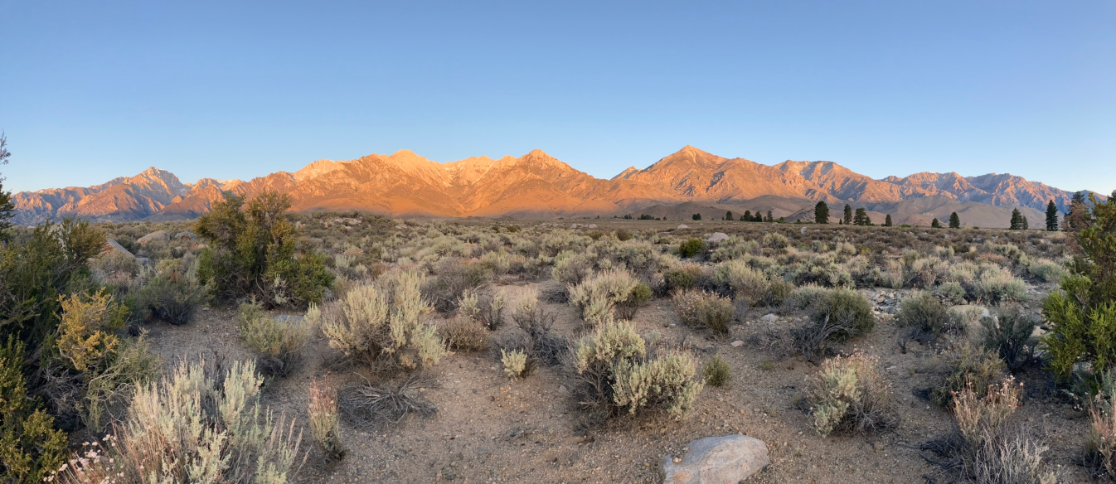Surveying for Desert Thrashers
/My day starts about an hour before sunrise on this April morning, as I get up and prep for the coming day’s surveys here near Knob Hill, by Searchlight. Grabbing my pack and my water bottle, I start walking, and arrive on my first of three plots a few minutes after sunrise, enjoying that golden moment when the landscape glows … but not enjoying it for too long!, since as soon as I crest the ridgelet that is on my plot’s boundary, I need to scan around me, on the off chance there’s a thrasher perched. No such luck.
So I begin walking the plot. It’s a 300 by 300 meter block, and I’ve got 40 minutes to survey it - so I walk the length of the block, north then south then north again, making sure that I get within 50m of every point in it. We’re collecting information on every bird we detect using the plot, but mostly we’re focused on Bendire’s and Le Conte’s Thrashers, and Loggerhead Shrikes. It’s a busy little plot, with several singing Black-throated Sparrows, some migrating Brewer’s Sparrows, chirping House Finches (though nothing like the flock of 90 I saw on a plot two days before), a Ladder-backed Woodpecker, with a singing Scott’s Oriole and Cactus Wren a bit beyond the plot boundaries. None of my focal species though.
On to the next! It’s funny, the habitat isn’t much different and it’s still early in the morning, but this plot is SILENT compared to the first one. I flush a group of four silent adult Black-throated Sparrows, and a little thereafter a silent Mourning Dove. And then, as I near one corner, where there’s a little bit higher density of Mojave Yucca, there it is – a fairly quiet, long song, that screams THRASHER. I pause my 40-minute timer, and head over to the yuccas … and nothing. I wander around in hope that I’m going to find it, but time is ticking, and I need to continue my survey. So I sigh, excited but a little bummed that I haven’t been able to see it, re-start my timer – and there it is! Yep, a beautiful Le Conte’s Thrasher, perched on the top of a Mojave yucca, beginning to sing again. So I re-pause my timer, enjoy the view, and then when it flies off shortly thereafter, walk over to get the perch location and other details. Then I get going again, and finish up the plot.
My final plot is also quiet, so I’m able to survey it straight through with no pauses, and then work on some habitat surveys (and finish up my water bottle - my internal thermometer is still set on northern Nevada mode!). Finally, I’m done, and ready for the hike back to the car. After several days of work, it feels really good to finally have a thrasher! It is so incredibly dry down here right now, and the plants are reflecting that. Over the past several days, I’ve been looking at white bursage that are functionally leafless; creosotes often still with brownish leaves, and letting one or more branches die; and shadscale lacking a full set of leaves – with many of those that are there, dropping at the gentlest touch. So I wonder how the thrashers will respond, and am looking forward to the end of the survey season, and being able to see where we have found them, and what we're able to conclude about this year's breeding season.
This desert thrasher project has arisen out of Partners in Flight’s Desert Thrasher Working Group. You can find more information about the working group here.
Happy birding,
Jen
Epilogue: As it turned out, that was the only thrasher I detected during my surveys. Data are still in the entry phase right now, so stay tuned for the overall results.
Thrasher survey plot west of the Spring Mountains




